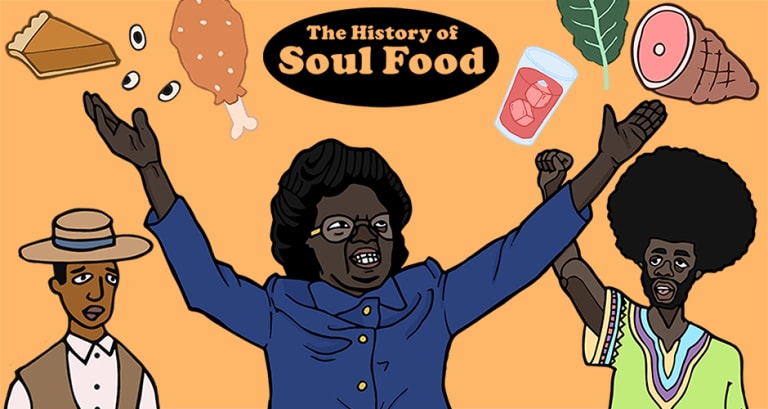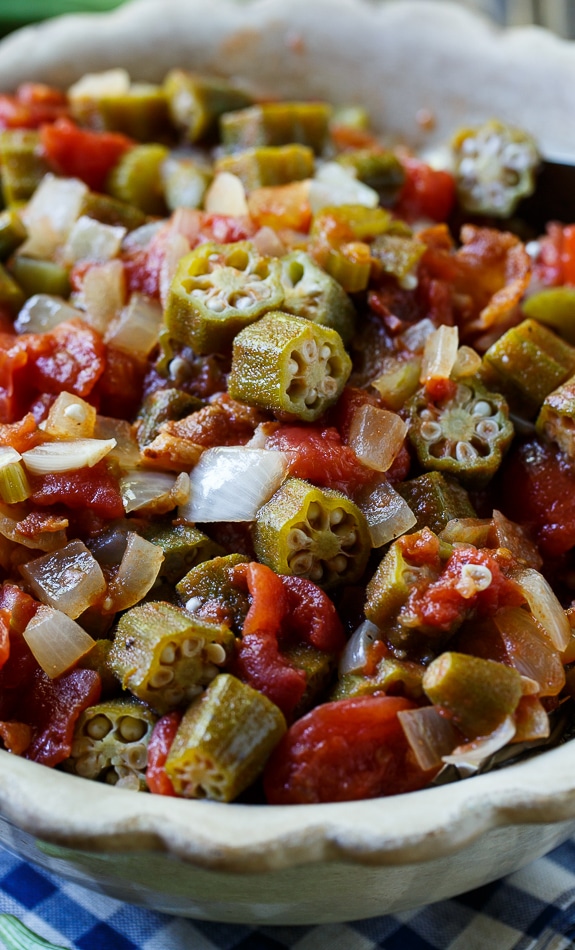One of the most recognized and popular types of cooking from the United States is known as soul food. Black Americans have passed secrets, tips and recipes to one another for centuries. I was introduced to soul food when I went home with a highschool friend. Boy oh boy could her mama cook, yummy is all I can say. Where and when did the conception of soul food happen??
The states of Georgia, Mississippi and Alabama are often referred to as the "Deep South" These were the states where African individuals were made slaves. The enslaved individuals were offered meager food rations that were low in quality and nutrition value. African food traditions were used to prepare these rations. Thus the beginning of Soul Food.
Soul food is often found under comfort and decadence food genre. The cooking genre requires 4 key ingredients. These ingredients links Americas dark period of time when slavery took place and the African cultures that they came from. Those 4 ingredients are pork, greens, okra and rice.
The slave trade brought many new foods into availability in the states. Slave traders would take several crops that were native to Africa These crops would help keep the enslaved alive. In America the enslaved Africans would grow these crops on the plantation Rice being a staple in many African dishes remains thru today. For example jambalaya is a dish often served in West African countries. Likewise, dishes like Hoppin' John resembles dishes that are served in other African nations
- 4 slices bacon
- 1 medium onion, chopped
- 1/3 cup chopped celery
- 1 (14.5-ounce) can diced tomatoes
- 1 (14.5-ounce) can stewed tomatoes
- 1/2 cup water or chicken broth
- 4 cups sliced okra
- 3/4 teaspoon seasoned salt
- 1 teaspoon Tabasco sauce
- 1/2 teaspoon garlic salt
- 1/2 teaspoon black pepper
- Instructions
- Cook bacon in a cast iron Dutch oven. Remove bacon and set aside.
- Add onion and celery to the bacon grease and cook until soft, about 7-8 minutes.
- Add tomatoes, water, okra, and seasonings. Cook 20-25 minutes, maintaining a simmer and stirring occasionally.
- Crumble bacon and stir in just before serving.
Okra is a vegetable rich in history and wildly popular in southern American cooking. Originally from Ethiopia the vegetable has made its way through the Middle East, North Africa and South Asia. Okra made it to Americas aboard the slave ships. The many uses of okra may surprise you. The slimy green veggie continues to be made in soups, stews and rice dishes. In the deep south you will often find okra fried or as an ingredient in gumbo.
The southern part of the United States is known for it barbeques. Whether casual backyard gatherings or large cook offs they are a time to honor time gone by and a form of art that started out very humbly. The choice meat in the south is often pork that was often salted and smoked. The Atlantic slave trade brought another manner so that the meat allotment would not go bad. However, it was not just striving to keep the meat good but to cook with the meat that was allotted to them.
- 4 to 5 pigs' feet, halved lengthwise
- 1/2 cup kecap manis
- 1/4 cup sriacha
- 2 teaspoons salt
- 1/2 cup water
- For the sauce:
- 3 tablespoons kecap manis
- 2 teaspoons sriacha
- 3 teaspoons honey
- 1 teaspoon tamarind sauce
Rinse all of the trotters and place them into a shallow hotel pan or dutch oven. Loosely pour the kecap manis and the sriracha over the trotters. Add the salt and the water to the pan and cover with foil or a lid.
Preheat the oven to 325°F. Braise the trotters for 2 1/2 to 3 hours, until the trotters are very tender but not falling off the bone. Let cool briefly.
Meanwhile, start your grill. Arrange your briquets on one side of the grill or in a pile in the middle, so that there's plenty of room on the grill to indirectly cook the trotters. When the briquets have ashed over and are glowing red, arrange the braised trotters on the grate, skin side down.
Grill for 25 to 35 minutes, turning the trotters occasionally to check that the skins aren't burning. Serve immediately with the sauce on the side.
One cultural dish that I know my brother - in - love appreciates is the leafy greens. The continent of Africa has many dishes that are similar to the collard green dish from the West. A link between the African method of eating is clearly related to the technique of boiling greens. Greens are boiled in -pork fat, seasoned and then other veggies that were in season were added. Nothing went to waste as even the juices after the greens were cooked were saved to dip cornbread in during the meal.
Through out history food has always had a role to play. February is Black history month and as you can see food has an important play through the years here a well.
retweet post here
shared at these blog hops linkups and parties







Thank you for sharing the interesting history about Soul food. I love cooking, eating with some history. Have a lovely weekend.
ReplyDelete